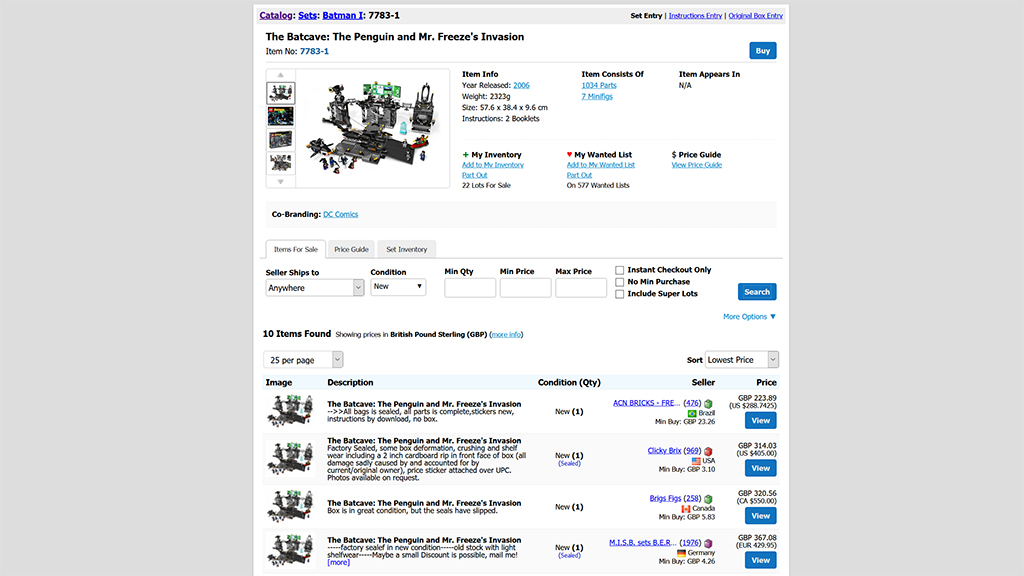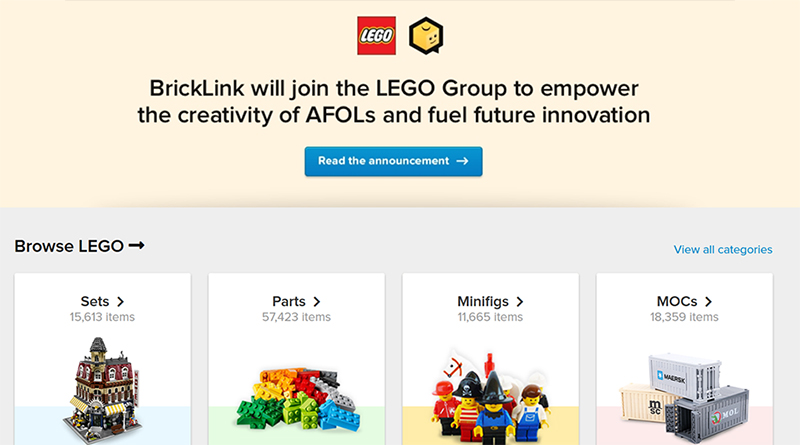The LEGO Group acquires Bricklink: What we know so far
Bricklink is moving from an independent selling platform to a part of the LEGO Group – what does it all mean?
The LEGO Group has announced that the company has purchased Bricklink, an independent website that works like eBay, but for LEGO parts and sets. This news has surprised fans, leading to many questions, including the big one – is the LEGO Group seeking to control the market for its own second-hand products?
While the press release is light on detail, interviews with LEGO Chief Marketing Officer (CMO) Julia Goldin have been published, in which she seeks to reassure fans that nothing at Bricklink will change as a result of the acquisition.
“We’re not planning to make any changes in the immediate future on the BrickLink platform because it operates really well and serves the fans very well,” Goldin told the Brothers Brick. “So in terms of how it operates it will continue the way that it is.”
In an interview with Brickset, she confirms that there will be no changes to transaction fees and that there will be no price-setting: “We would seek to maintain the marketplace in a way that is competitively robust and we will continue to allow sellers to operate as they are doing already. LEGO will not be interfering with that in any way.”
One change that she did confirm will the removal of military based custom elements from the website.
But why would the LEGO Group purchase a relatively small, niche website, that focuses on re-selling if they had no plans to make changes? After all, the LEGO Group tends to look unfavourably on those who buy LEGO sets or elements and then re-sell them.

Perhaps the LEGO Group has seen the opportunity to make money selling the same product multiple times – first when the set is sold, then when it is re-sold and Bricklink takes a commission. The Brothers Brick put this suggestion to the CMO, but apparently this is not the case either:
“The marketplace right now operates very well and it provides an opportunity for fans to purchase the parts that they need — some of them are very difficult to find, and they don’t exist in production anymore, so it’s quite complementary. So we really don’t see — they obviously operate very well. We want to see a fair competitive environment, and that’s just one part of that kind of environment. So there’s no conflict there in my view.”
Another area that Goldin does not see an issue is when it comes to reputational issues in selling used elements – although she does not go into detail about how the LEGO Group may find itself arbitrating between buyers and sellers when issues occur as used bricks are sold. “What’s great about LEGO, as you know, is that it’s a true system of play, and every piece that we’ve produced since 1958 is compatible with the bricks that we have today. We’re very supportive of the fact that these bricks are still in circulation and they’re still in use and they’re being leveraged. So again, no conflict there — full support.”
Ultimately, no specific reason for the LEGO Group acquiring Bricklink is given. “We want to strengthen our relationship and deepen our relationship with the fan community,” Goldin tells the Brothers Brick. “We really want to see this as an opening for more dialogue and more understanding of how LEGO can actually lean in.”
She also gives Brickset reasons for the aquisition: “Our love and appreciation for adult fans of LEGO. They have always been very important to us and have contributed so much to helping us build the brand. We feel that we can engage with them in a much deeper way through the ownership of BrickLink.” Neither of these statements elaborate, or particularly mean anything, so unfortunately do not provide clarity.
“…the acquisition will create an even stronger connection for LEGO to learn from adult fans and we hope this will become an excellent platform to improve that relationship. BrickLink’s global audience is also important, enabling us to broaden our reach to AFOLs around the world,” Goldin tells Brickset. This may be more illuminating, as it suggests that the LEGO Group may want to use Bricklink to create new AFOL markets and/or mine the data that the website produces to gain new market insights.
Given how light on detail the announcement is and how little the LEGO Group are willing to reveal at this stage about future plans, the best way to get a sense of where Bricklink is going is to keep an eye on how the platform evolves over the next few months.
To continue to support the work of Brick Fanatics, please buy your LEGO sets from LEGO.com and Amazon using our affiliate links.







